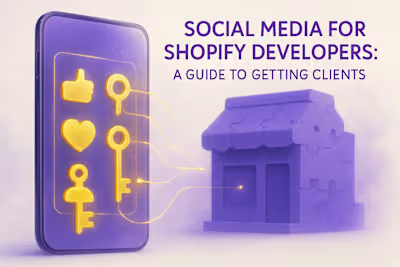5 Essential Technical Skills Every Expert Shopify Developer Needs

5 Essential Technical Skills Every Expert Shopify Developer Needs
1. Deep Proficiency in Shopify Liquid
Understanding Liquid Fundamentals
Dynamic Content and Logic
2. Expertise in Shopify APIs (REST and GraphQL)
Mastering the Admin API
Leveraging the Storefront API
Using the AJAX API
3. Advanced Front-End Development Skills
Modern JavaScript (ES6+)
Mobile-First and Responsive Design
4. Performance Optimization and SEO
Site Speed Optimization
Technical SEO Implementation
5. Version Control and Development Workflow
Proficiency with Git and GitHub
Using the Shopify CLI
Conclusion
References
5 Essential Technical Skills Every Expert Shopify Developer Needs
1. Deep Proficiency in Shopify Liquid
Understanding Liquid Fundamentals
{{ product.title }}, you're using an object to display a product's name. Tags, which use {% %} syntax, control what happens in your template. For instance, {% if product.available %} checks if a product is in stock before displaying certain content.{{ product.price | money }} to format a price correctly, or {{ product.title | upcase }} to display a title in all caps. Understanding how to chain filters together opens up powerful possibilities for data manipulation.Dynamic Content and Logic
2. Expertise in Shopify APIs (REST and GraphQL)
Mastering the Admin API
Leveraging the Storefront API
Using the AJAX API
/cart/add.js, /cart/update.js, and /cart/change.js endpoints form the backbone of most dynamic cart implementations. But there's more – you can fetch product recommendations, search for products, and even get shipping rates without refreshing the page.3. Advanced Front-End Development Skills
Modern JavaScript (ES6+)
Array.map() and Array.filter() instead of jQuery loops can significantly improve performance, especially on mobile devices where every millisecond counts.Mobile-First and Responsive Design
4. Performance Optimization and SEO
Site Speed Optimization
loading="lazy" attribute is a start, but advanced implementations might use Intersection Observer for more control.Technical SEO Implementation
5. Version Control and Development Workflow
Proficiency with Git and GitHub
Using the Shopify CLI
shopify theme push and shopify theme pull sync your local files with Shopify. You can work on multiple themes simultaneously, switch between them effortlessly, and even create development stores for testing.Conclusion
References
Posted Jul 4, 2025
Master the 5 crucial technical skills required to excel as a Shopify developer. From Liquid and APIs to performance optimization, here's what you need to know.









